Creating a fictional financial app
After I post about my UX journey, I decided to apply for a job as a UX/UI Design Junior. It was my first application since I started studying this field.
The company gave me the challenge and 7 days to complete it.
This project was my first job application since I started studying this field. The company gave me the challenge and 7 days to complete it.
UX Designer
N/A
2019
Mobile

The problem
Most Brazilians don't manage well their money. They end up getting out of control and come to the end of the month full of debt.
These expenses accumulate over time until a person loses control completely, and becomes very difficult to recover.
The goal
Build a platform (desktop or mobile — you choose) of money management, in which the user can insert their expenses daily and have a vision of how much money they still have available for the month. Thus, balancing revenues and expenses.
Give incentives for the user to enter the daily expenses and generating reports with charts can help the user better understand their financial life.

Discover
Questions I wanted to answer:
Why do Brazilians don't manage well their money?
Are there so many Brazilians failing at it?
By researching I found that some people think managing the money is not important and it can be done off the top of their heads, others have problems with discipline and some don't prioritize it as they feel lazy or said that don't have time.
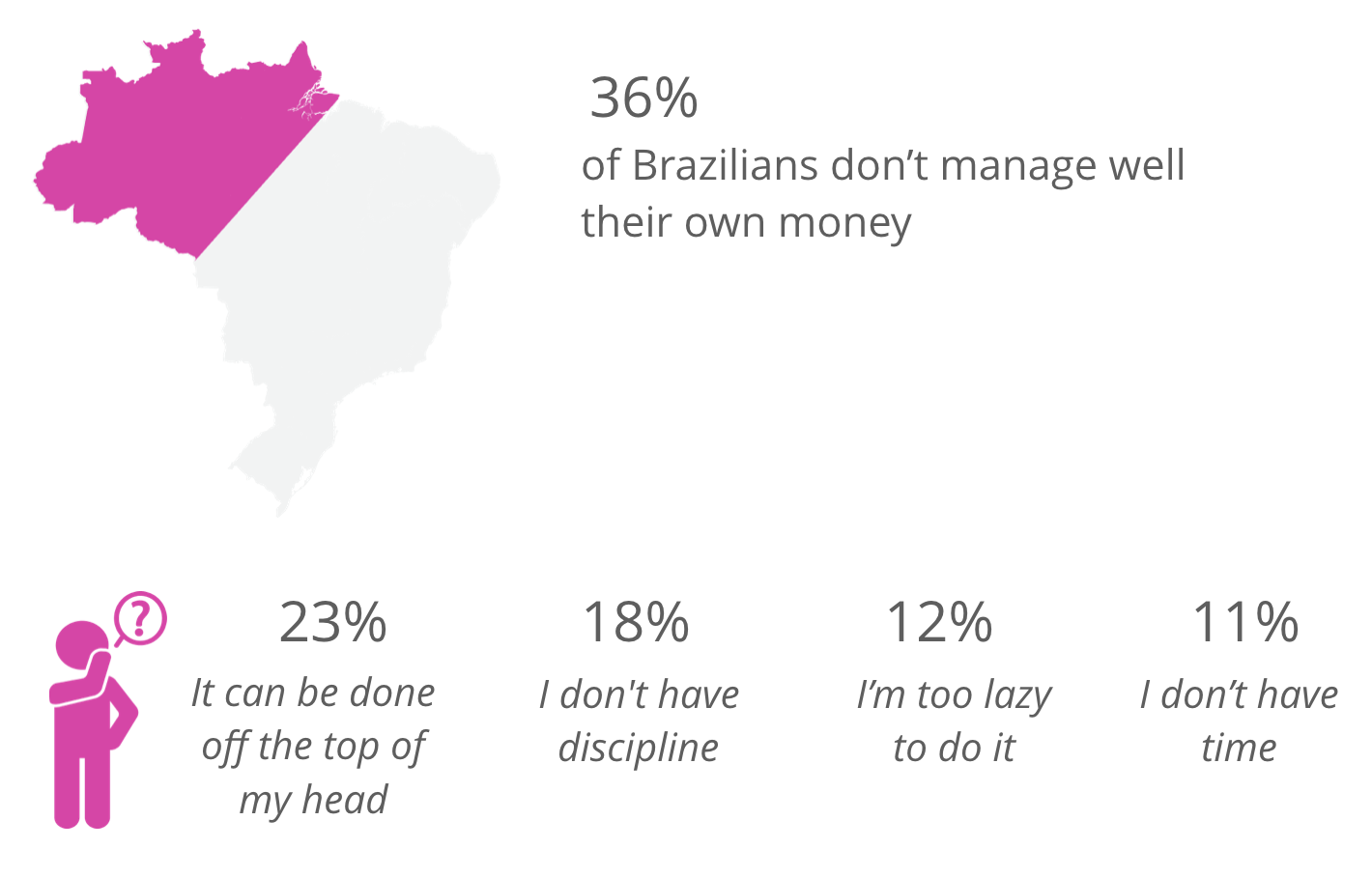
Of those who manage their money, more than half find it difficult to do it.
Maybe those who feel difficulty in managing their money, don't do it so well.
Both groups showed a lack of discipline.
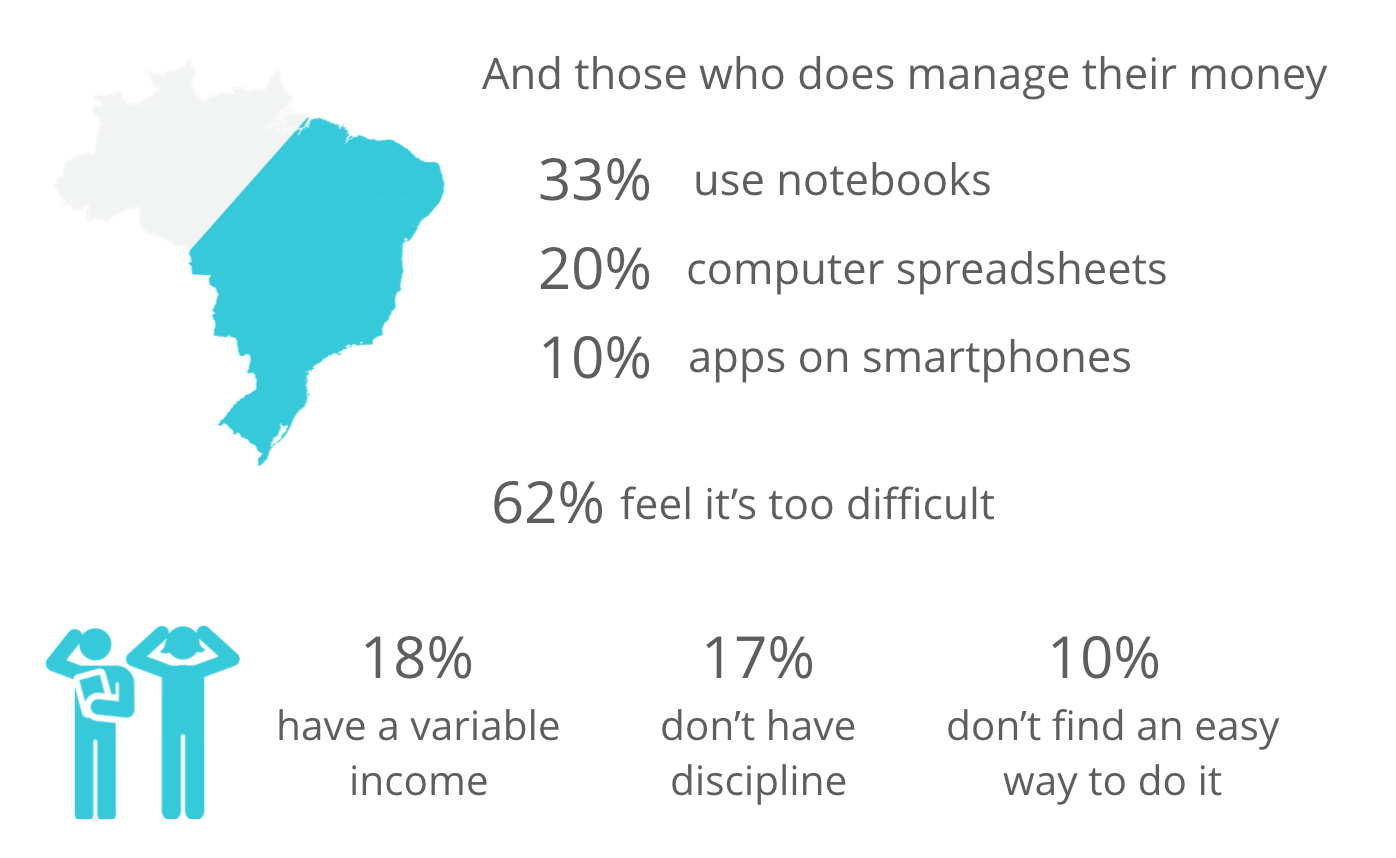
Major pain points:
lack of discipline
lack of financial education
Even though the previous research showed that only 10% use apps to manage their finances, this survey showed that stills half of the people, 49% are connected to the internet exclusively through their cell phones.
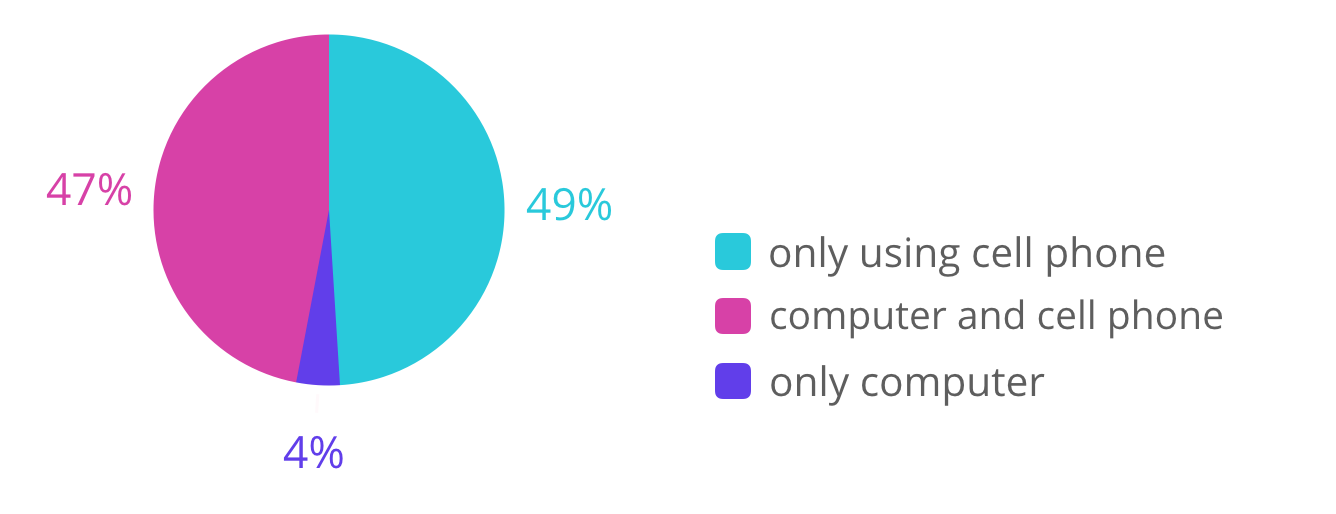
Based on this number and the following reasons, I decided to create a mobile platform:
Easy to keep tracking expenses at the time of the transactions;
Mobile-first approach.
Define
Job Map
I did a Job Map as a way of empathizing, and thinking about the person’s behaviors and needs. I started discovering, based on online research and my assumptions, the core functional job, which was:
Manage my finances throughout the month.
Due to time constraints and personal decisions for this study, I assumed the desired outcomes in each step, that is how the person would measure the success of doing the job. In a real case, it would be required qualitative research.
Then I defined the importance and estimated satisfaction for each desired outcome. Here it would be required quantitative research.
I used the formulas of ODI and Dan Olsen to see which metrics (desired outcome) I should focus on.
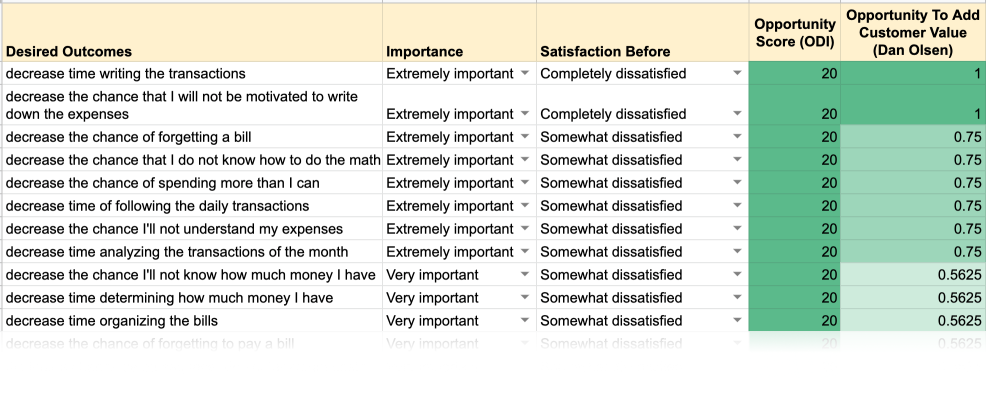
I used the formulas of ODI and Dan Olsen to see which metrics (desired outcome) I should focus on.
Job Story
When I'm trying to manage my budget over the month, I want solutions to:
🎯decrease time writing the transactions
🎯decrease the chance that I will not be motivated to write down the expenses
🎯decrease the chance of forgetting a bill
🎯decrease the chance that I do not know how to do the math
🎯decrease the chance of spending more than I can
🎯decrease time following the daily transactions
🎯decrease the chance I'll not understand my expenses
🎯decrease time analyzing the transactions of the month
🎯decrease the chance I'll not know how much money I have
🎯decrease time determining how much money I have
💚 to feel calm when dealing with my finances.
🎯 = Core Functional Job
💚 = Emotional job
Ideate
I researched apps related to finances, budget, and habit-building and I end up with 16 apps. Then I filtered the ones related to financial management and with an interface in Portuguese, as they could be the main competitors.
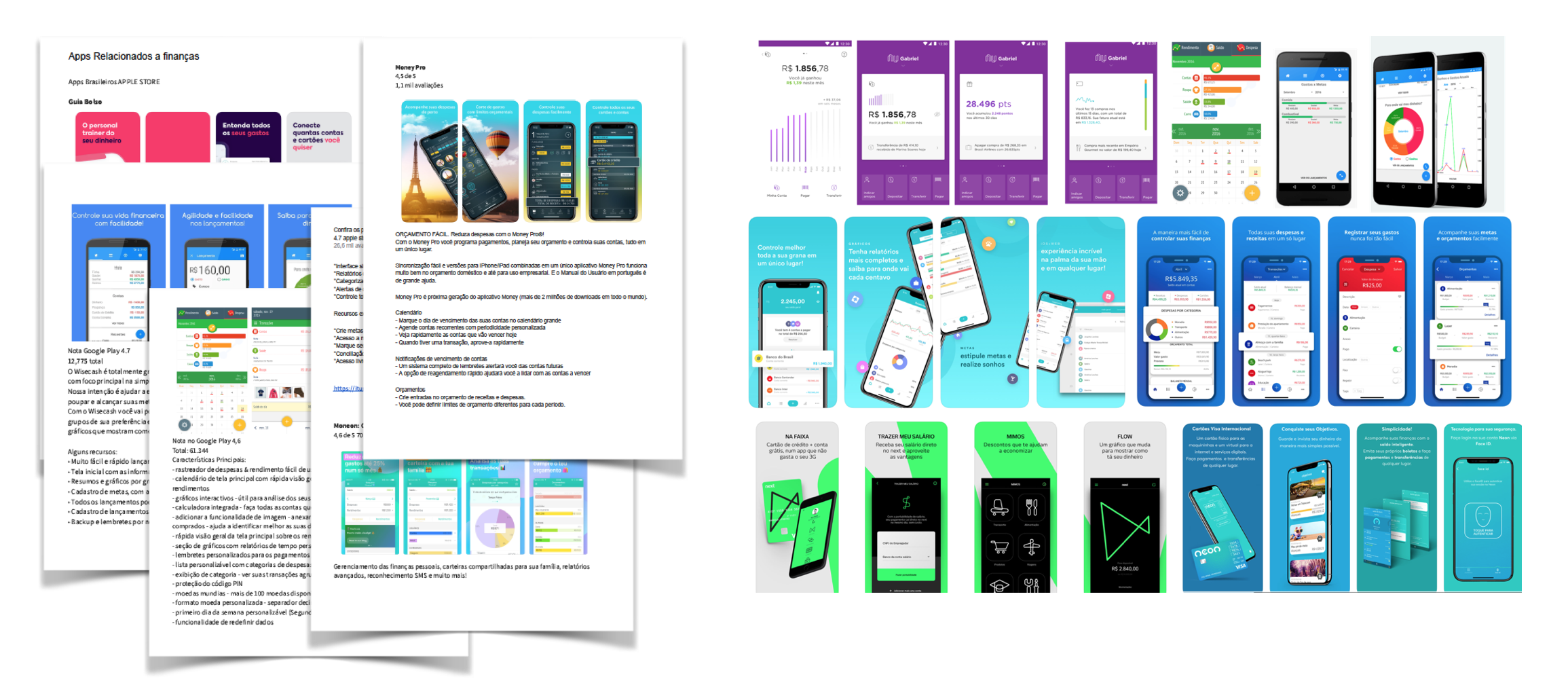
Here are some features I found related to the opportunities of the research:
2 of the 7 apps sync bank accounts automatically;
1 of the 7 reads SMS from the bank and adds it as a transaction — the person has to copy the message and add it to the app;
4 of the 7 send notifications;
7 of the 7 apps use charts to illustrate some expenses and transactions.
Sketching
I did a few quick sketches to help me organize my thoughts and to outline the app.
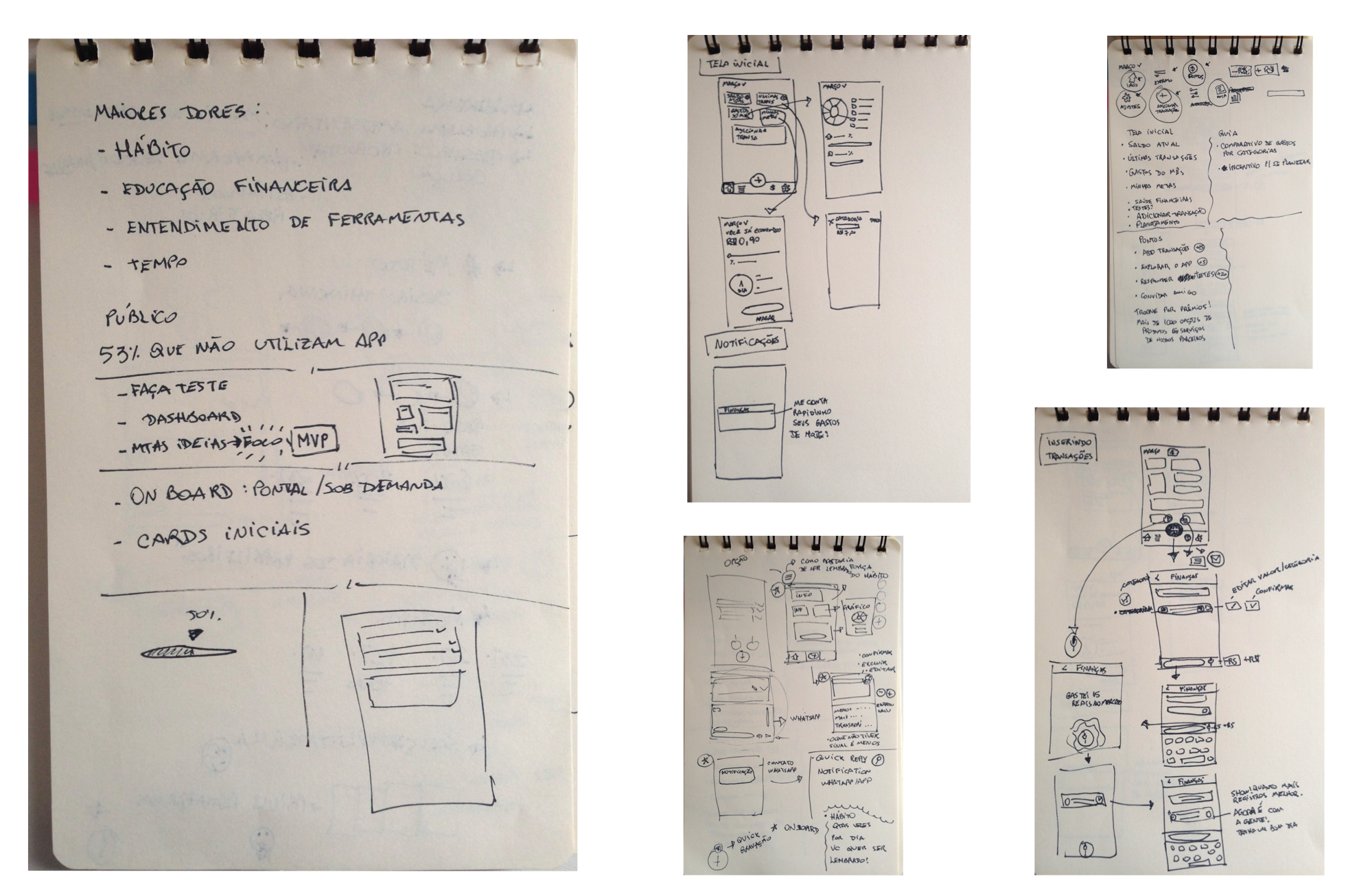
Deliver
High-Fidelity Prototype
I focused on solving some major desired outcomes found in the job map and online research.
The app should be:
Simple Easy to understand
Encouraging to build financial habits
Here are the highlighted features:
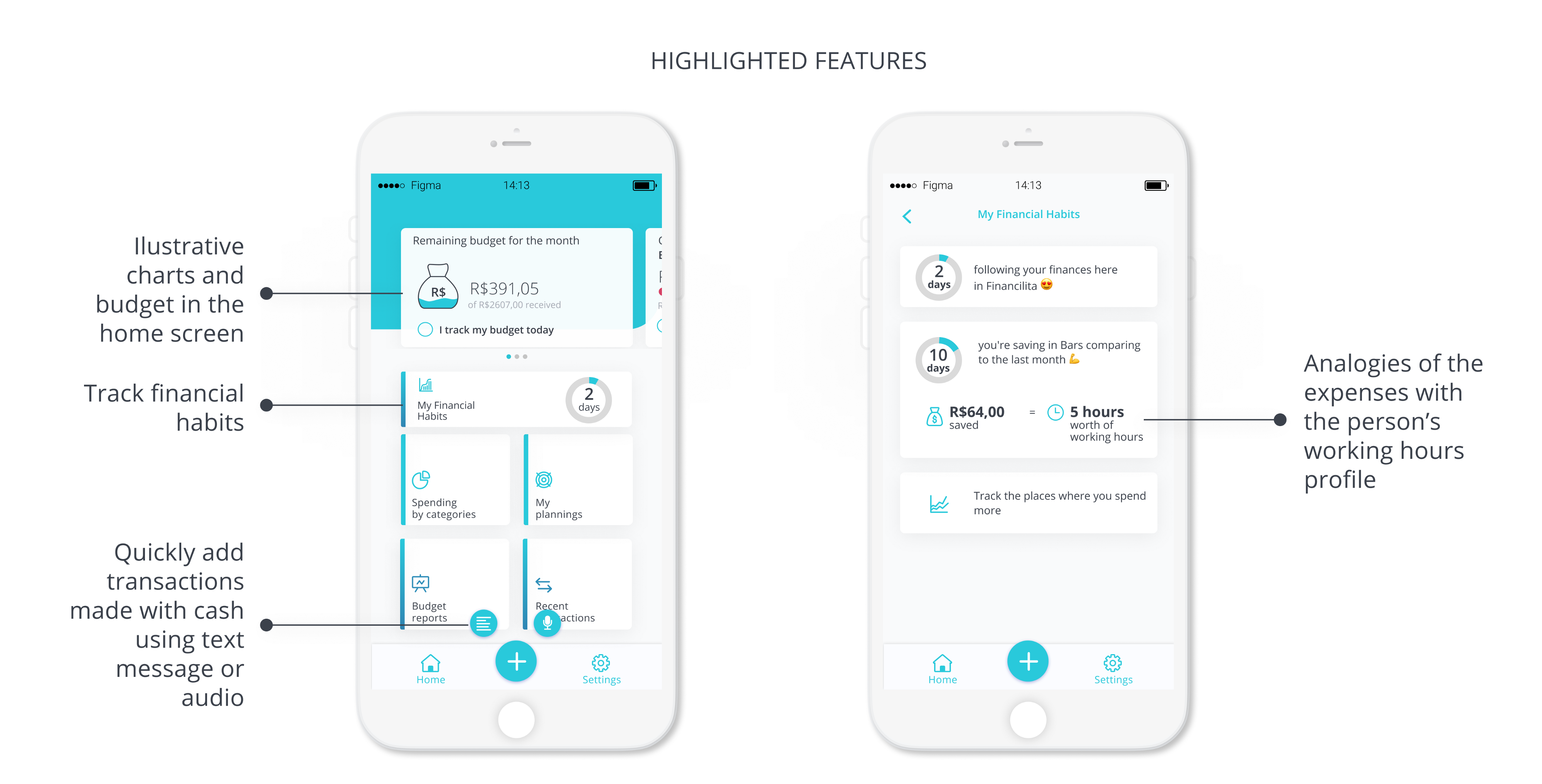
Easy and fast to add transactions
🎯 = Pain points addressed
🎯Decrease the time writing down the transactions
🎯Decrease the chance of not being motivated to write down the expenses
The app would sync bank accounts and categorizes the transactions automatically. For the expenses made with cash — the ones it doesn't sync automatically — there would be an easy and fast way to do it.
When in the app, the person clicks on the plus button and chooses to add a transaction by text message or voice.
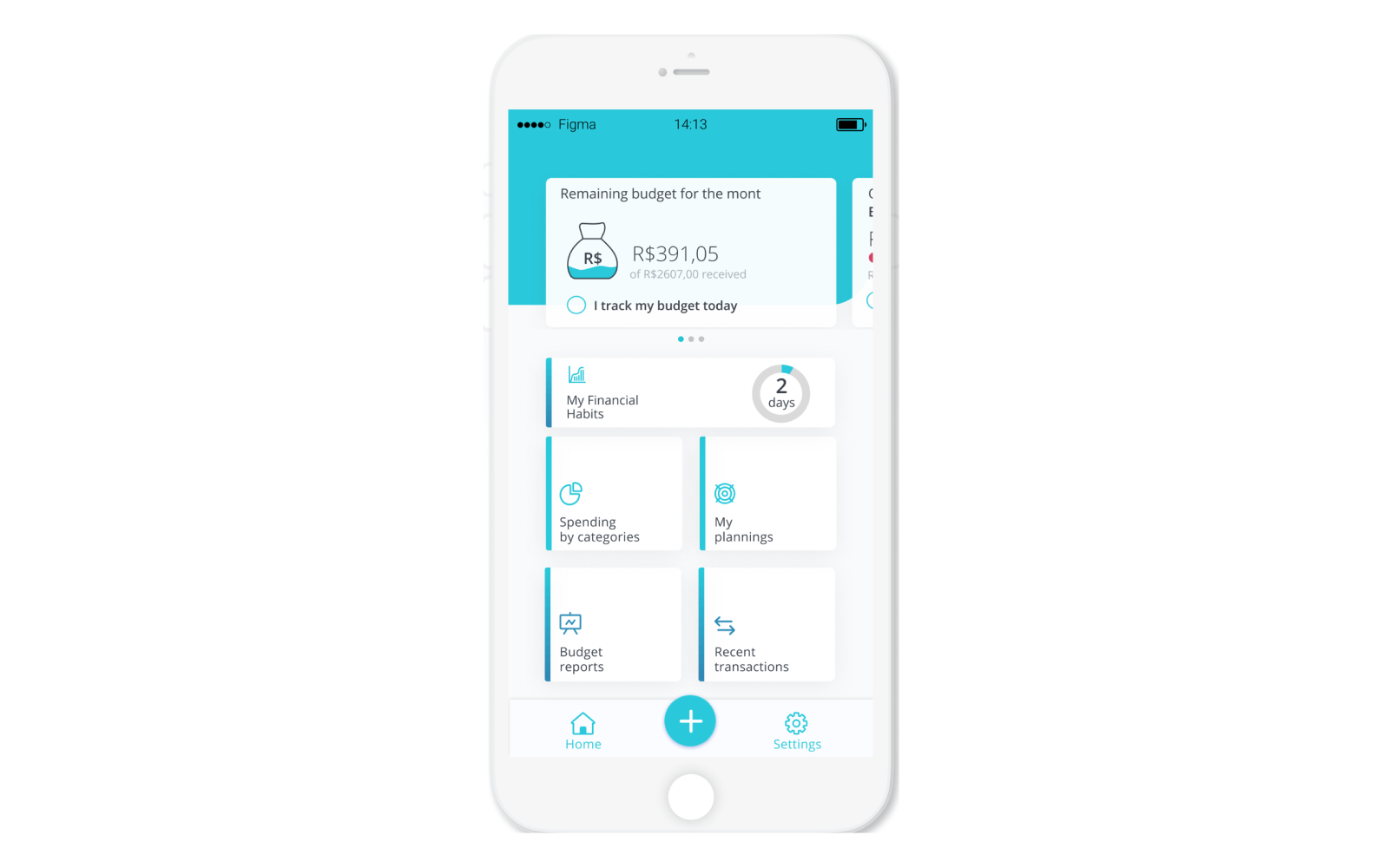
Add a transaction by voice
1. Hold the button
2. Say how much money was spent or earned
3. Confirm the information the app has read
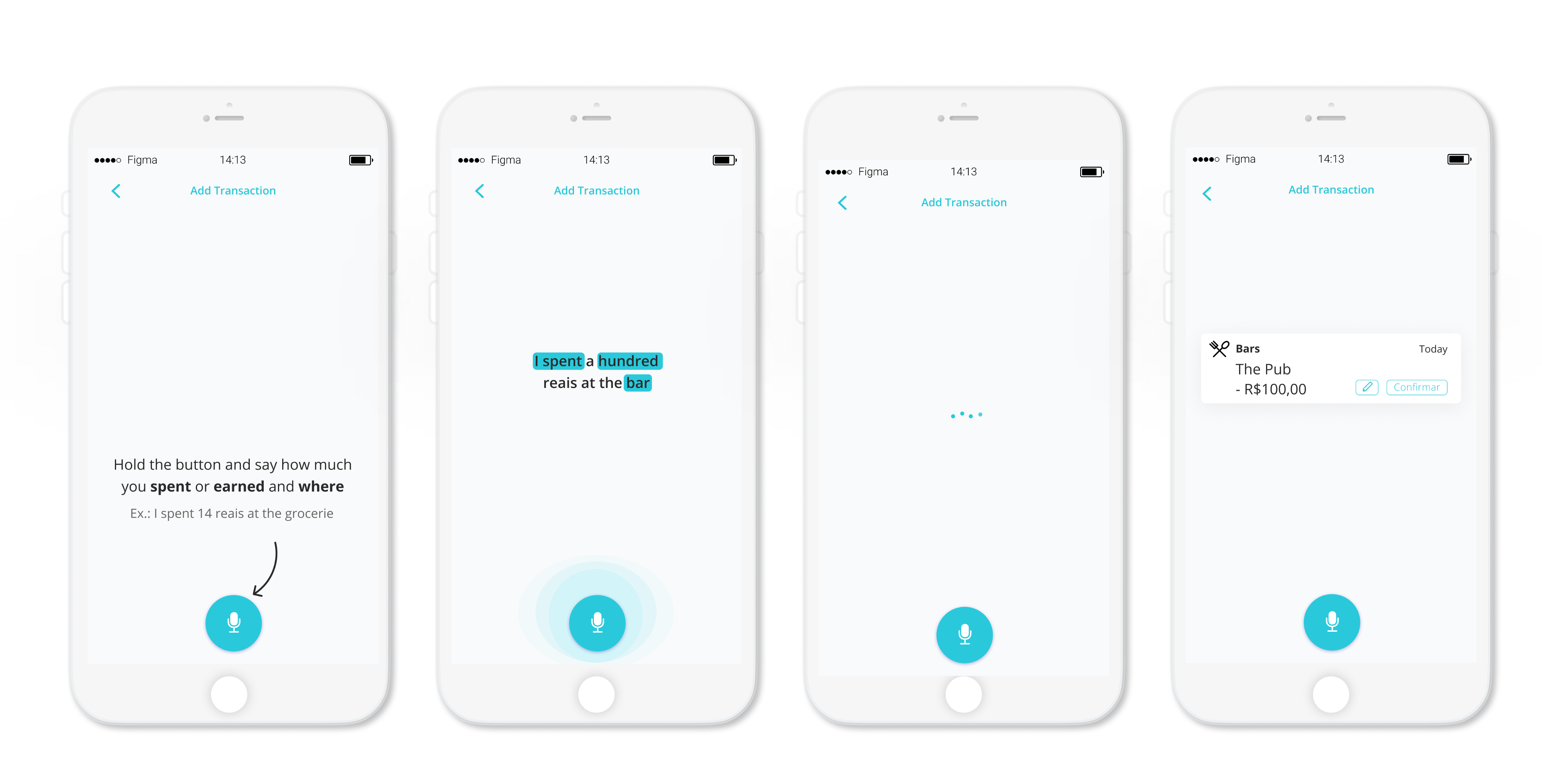
The left screen below shows how to use the text message to add a transaction.
It's a free text with no further steps, like writing in a WhatsApp conversation. The right screen below shows the reminder with a quick reply inviting to insert the transactions that happened during the day.
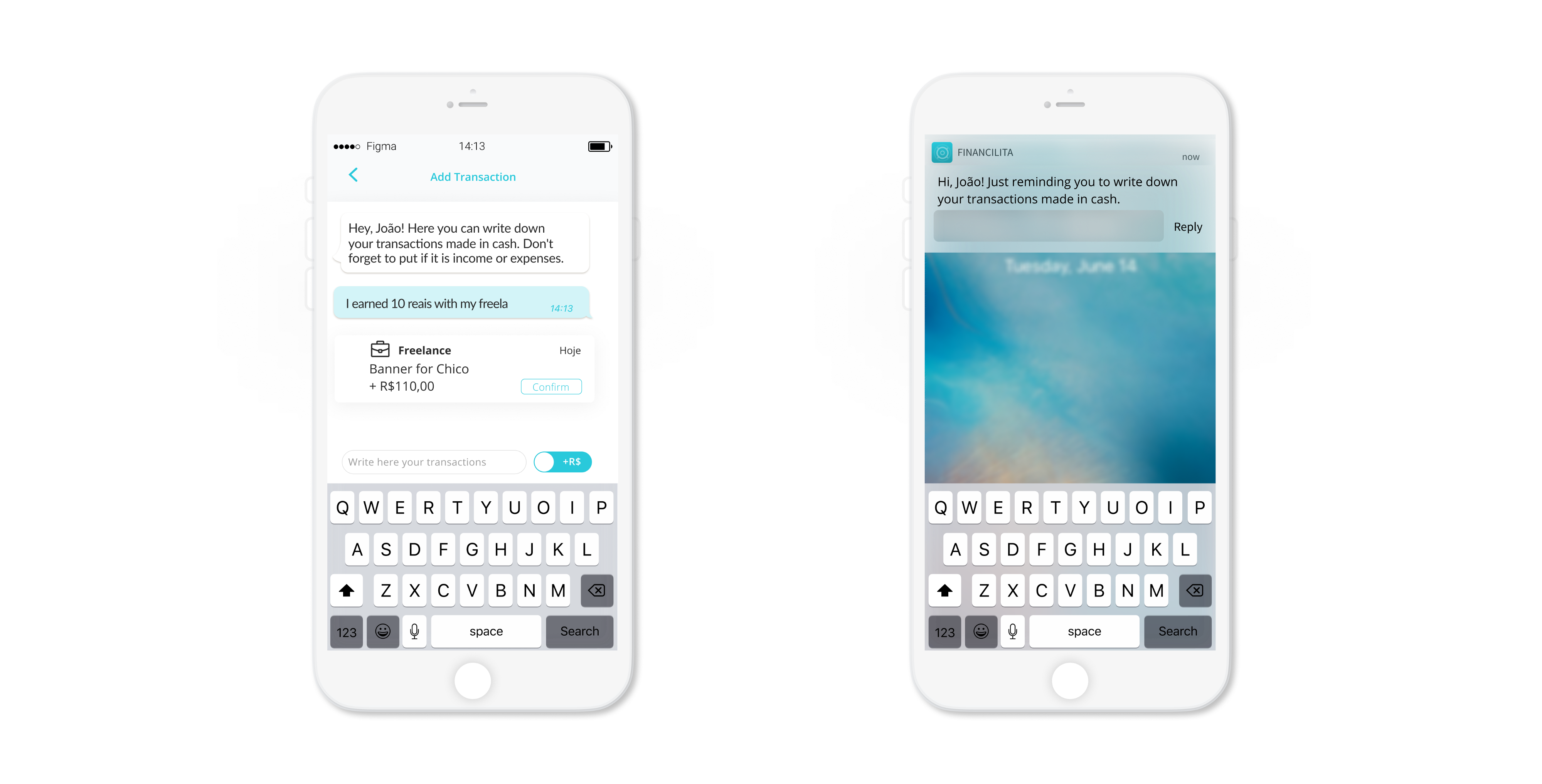
Motivating a healthy financial habit
🎯 Decrease the chance of spending more than they can
🎯 Decrease the time following the daily transactions
🎯 Decrease the chance of not knowing how much they have
The first time the person uses the app, there's a quick onboard explaining the importance of building healthy financial habits.
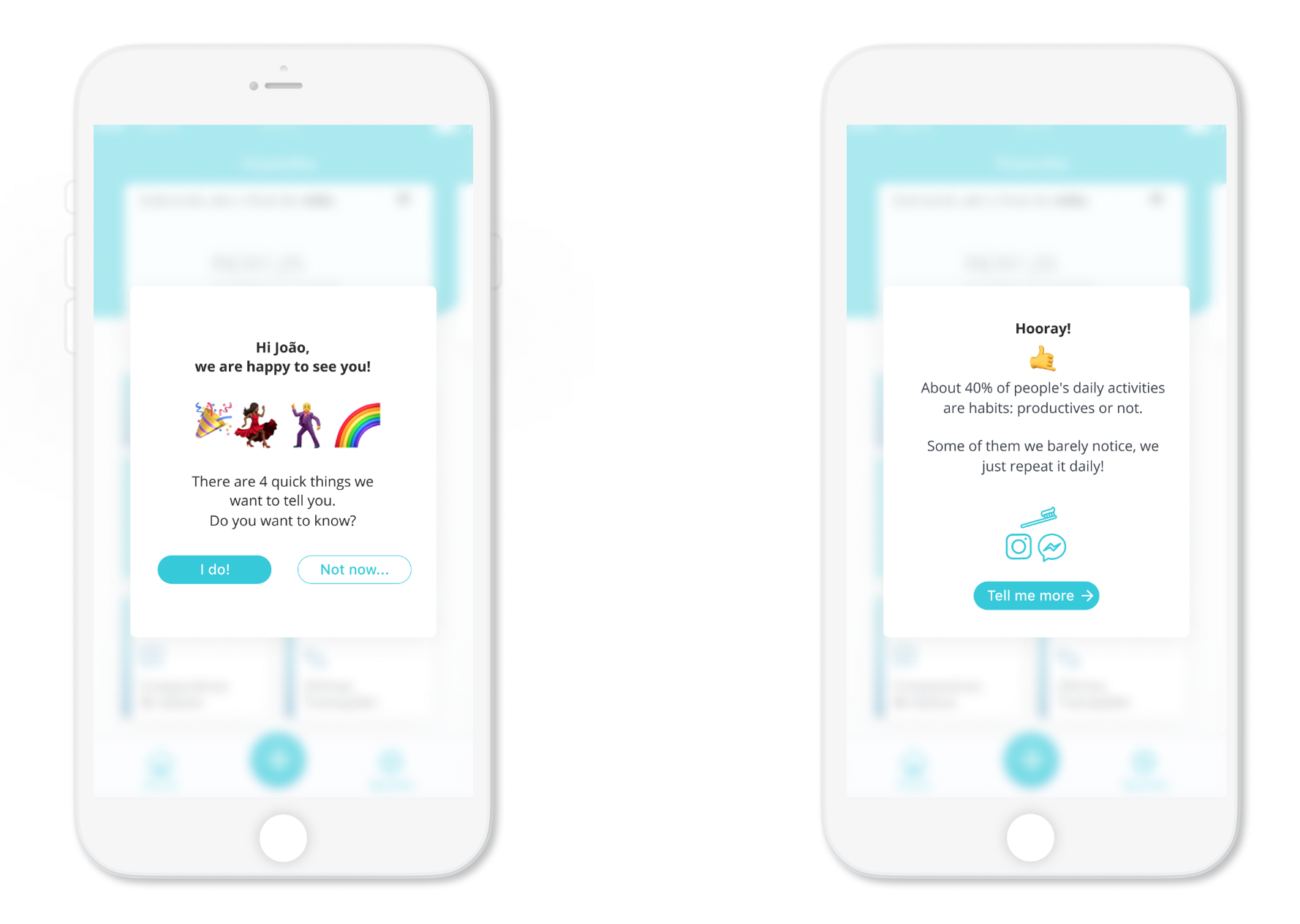
If allowed, the app will send a daily reminder to check the budget and insert transactions made with cash.
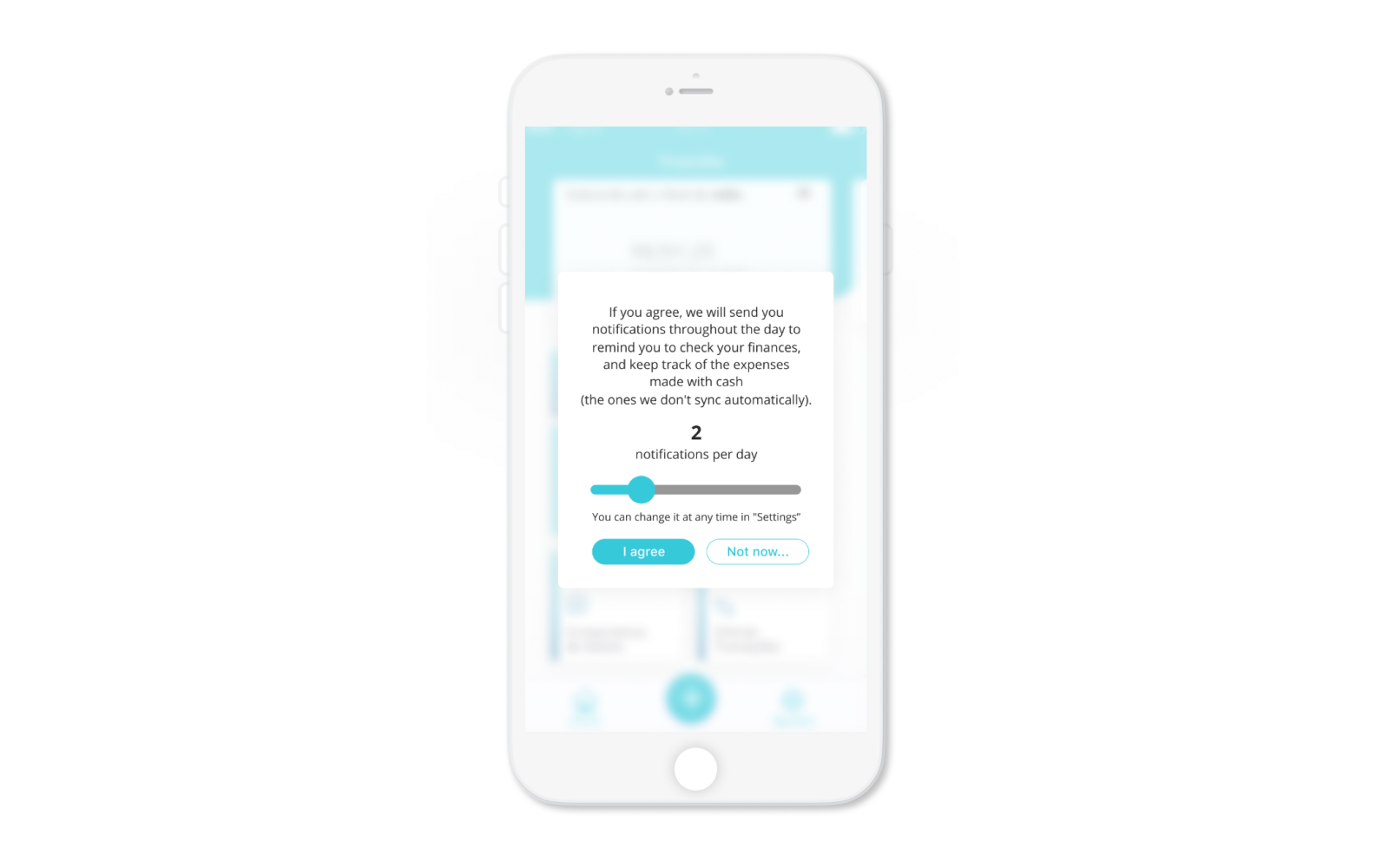
Financial education and money awareness
🎯Decrease the chance of not understanding the expenses
🎯Financial Education
As people are closer to credit cards and online payments, they get less contact with the cash and consequently less perception of the value of the money or even if there's any to spend.
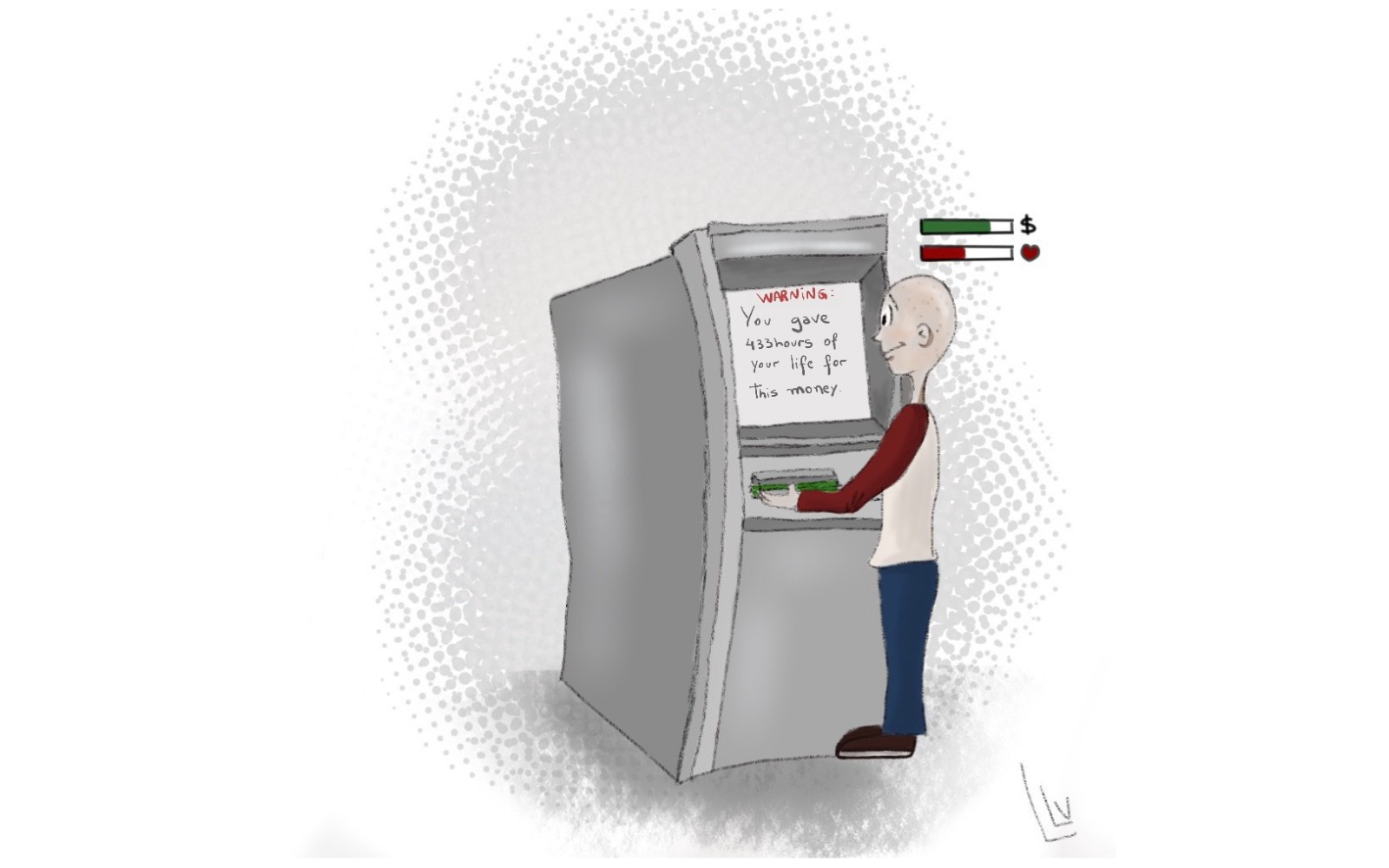
An illustration I made in 2017 about this subject
Shoppers spend up to 100% more when using a credit card to pay, rather than in cash. One of the reasons is:
Paying with a credit card, people tend to decouple from emotion and focus on the benefits of the purchase instead of the cost.
To bring awareness of the value of money back, and avoid spending more than they can, the app will show analogies of some transactions relating it to how many hours of work this transaction represents. Kind of like this.
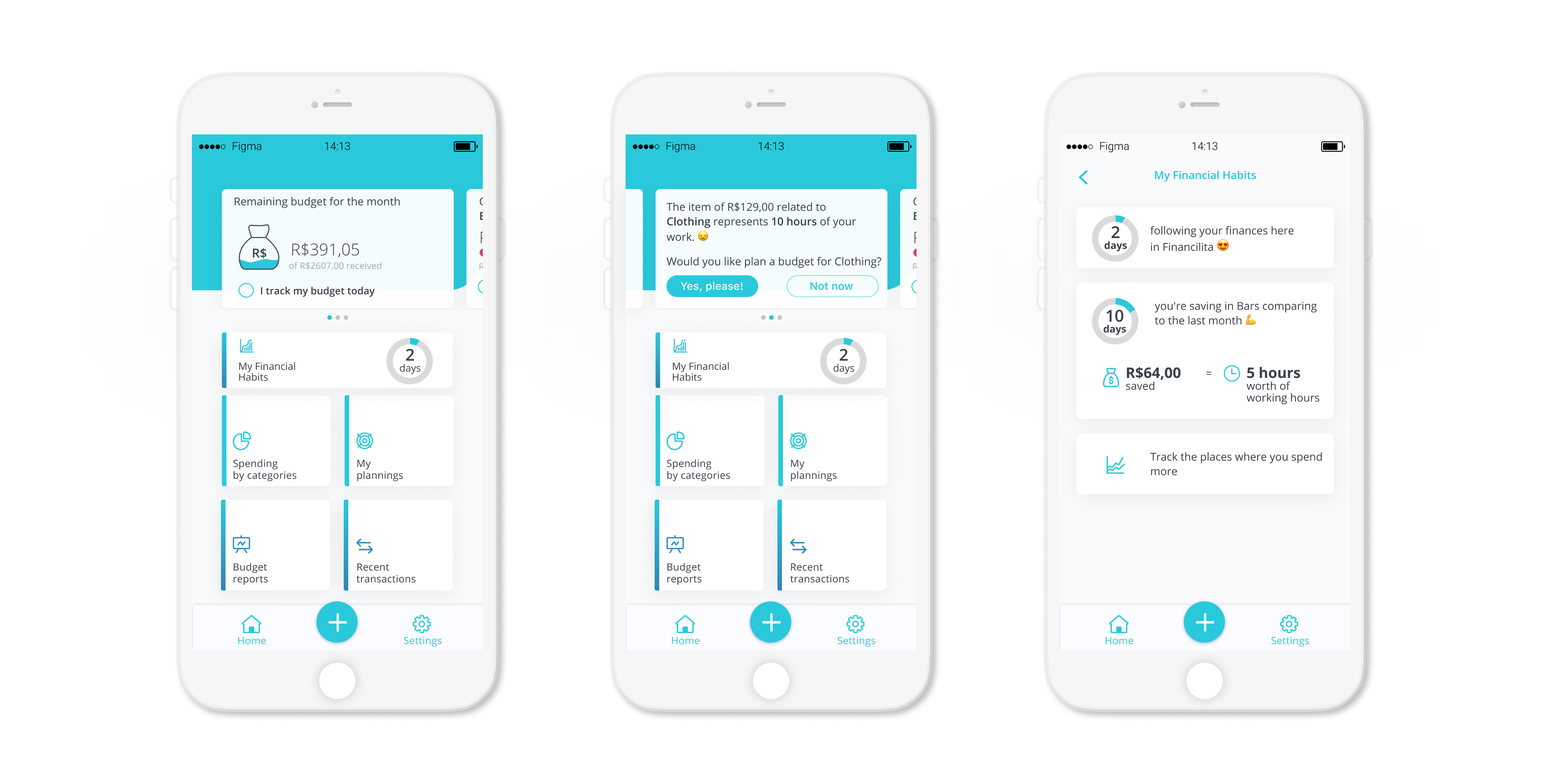
Illustrative charts
These are illustrative charts and comparisons of the expenses to one month to another.
The app calculates the average spending in a category and creates a budget based on spending patterns, then generate tips about how much is needed to stay on the budget.
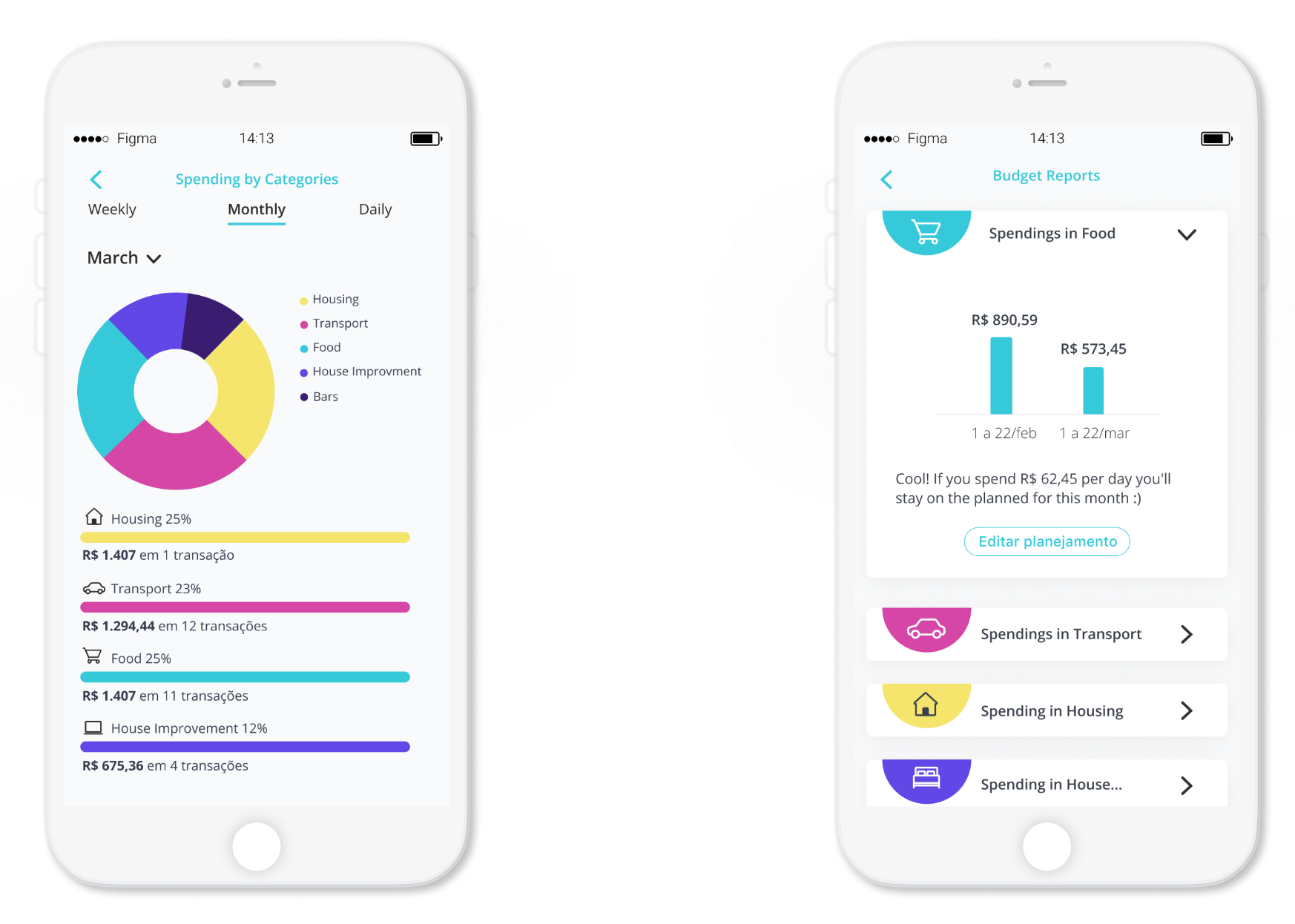
🎯Decrease time analyzing the transactions of the month
🎯Decrease the chance of not knowing to do the math
Limitations of this solution
Due to time constraints, I based the Job Map on my own assumptions and online research, I didn't interview anyone to gather data;
The opportunity score from Job Map was also based on my assumptions. An ODI survey would require quantitative data of about 100 answers to have a statistical representation;
I didn't test my prototype. It would be important to give scenarios in a usability test and validate my assumptions.
Reflections
It was a good challenge to learn how to prioritize processes and features, how to prototype using Figma, and have an idea of how it can be a job interview for a UX/UI design junior.
Even though they gave a platform as a solution, I think the time invested in the online research and job map (based on my assumptions) was still important to provide some insights for features I didn't see on the benchmark.
As the deadline was tied I tried to focus on what I thought was important, like understanding the problem to them generate ideas and design them. Still, I think it would be important to validate my proposal with some people.
Let's get in touch
Feel free to reach out for collaborations or just a friendly hello 😄
llaravacco@gmail.comDesigned and built by Lais Lara Vacco in 2022 using Ycode.
Last updated Jan 2025.
